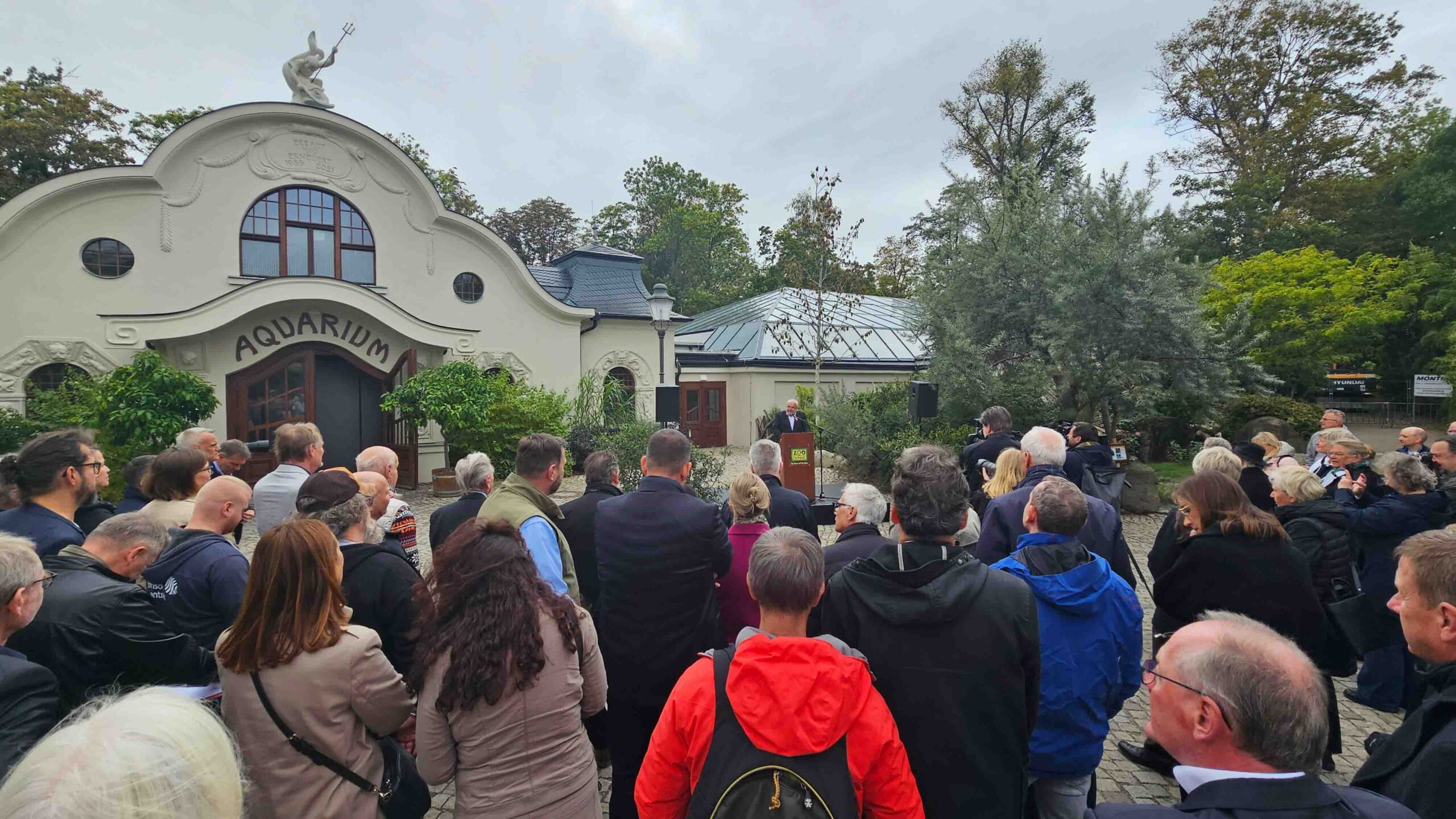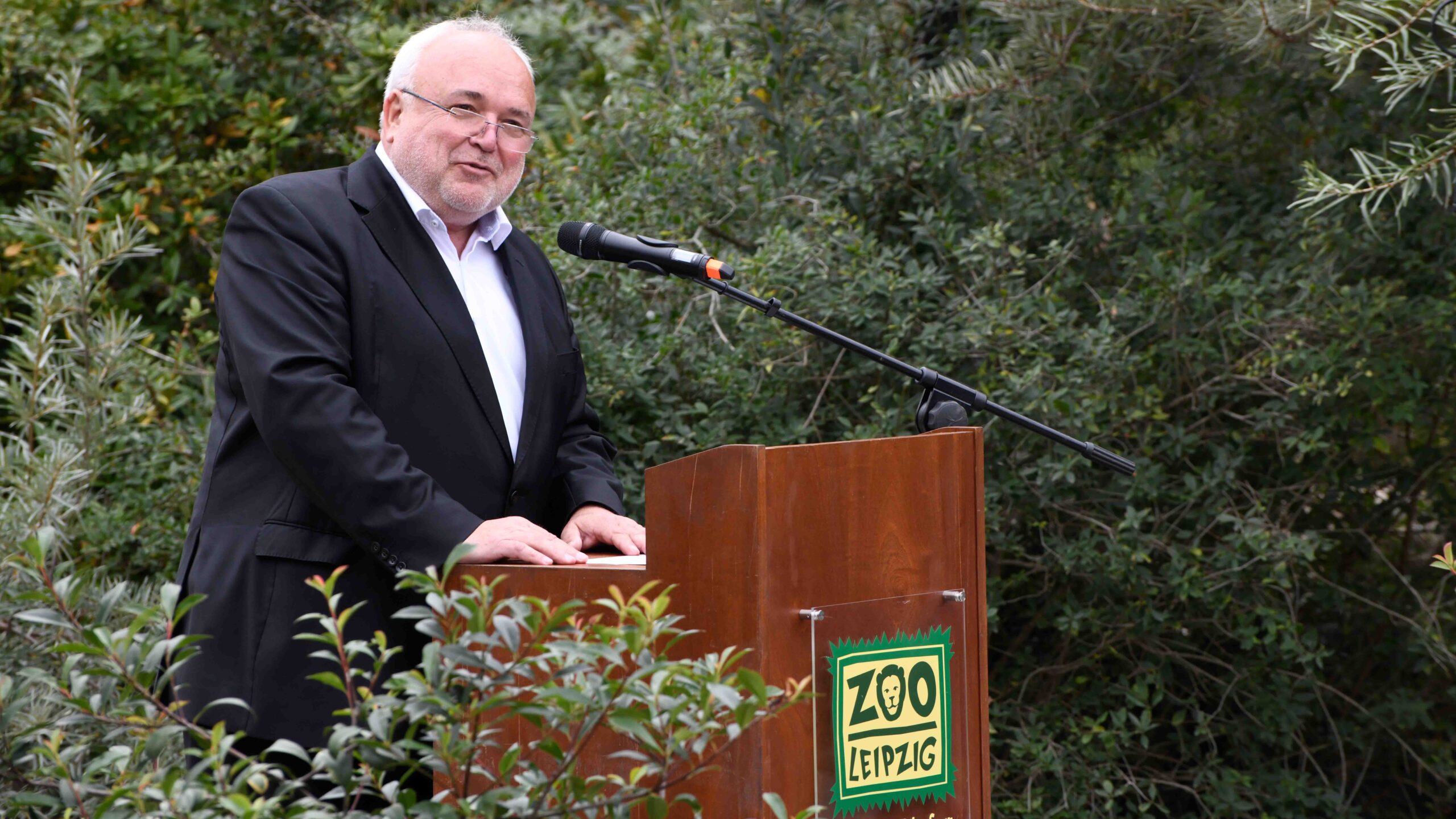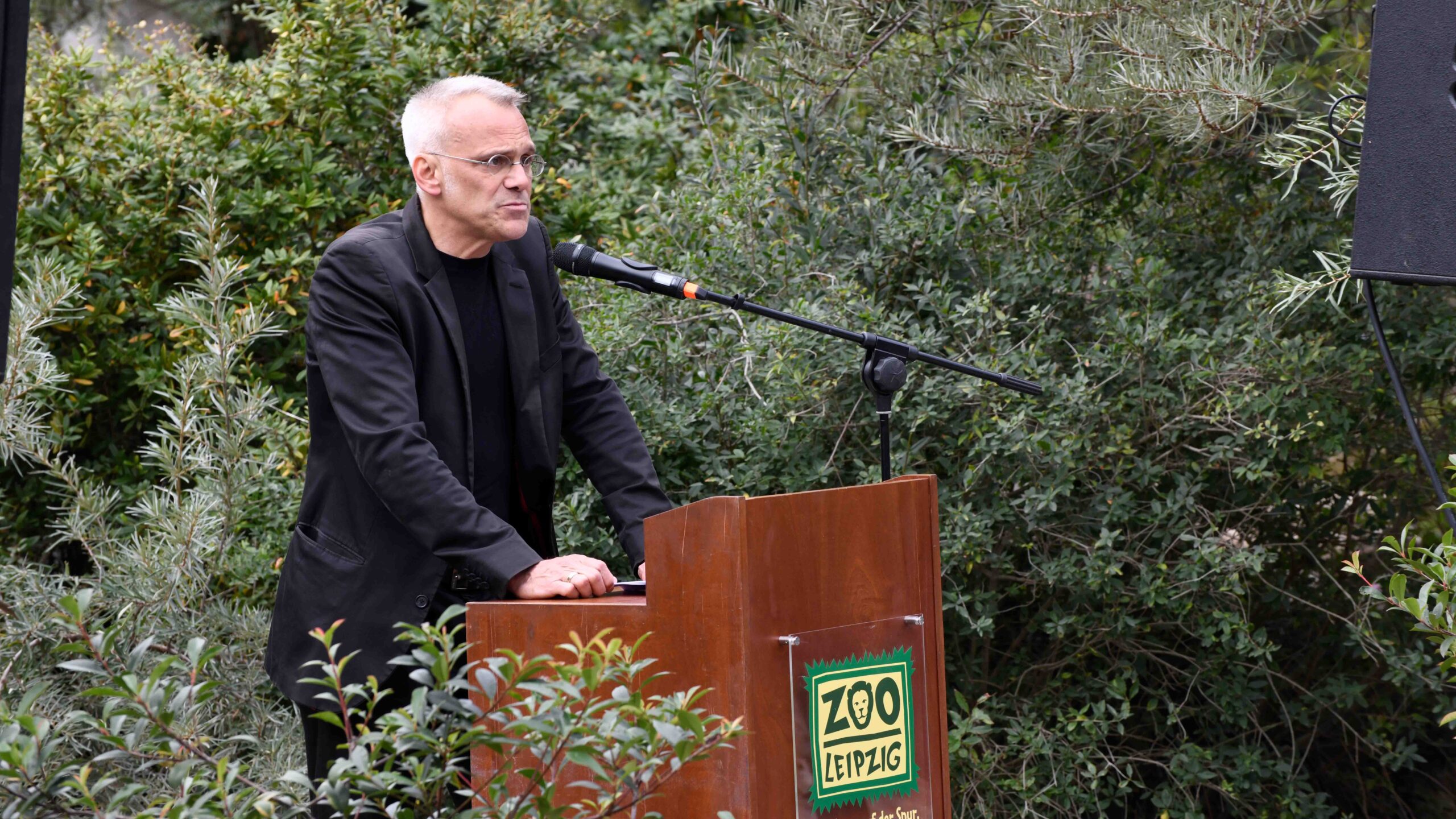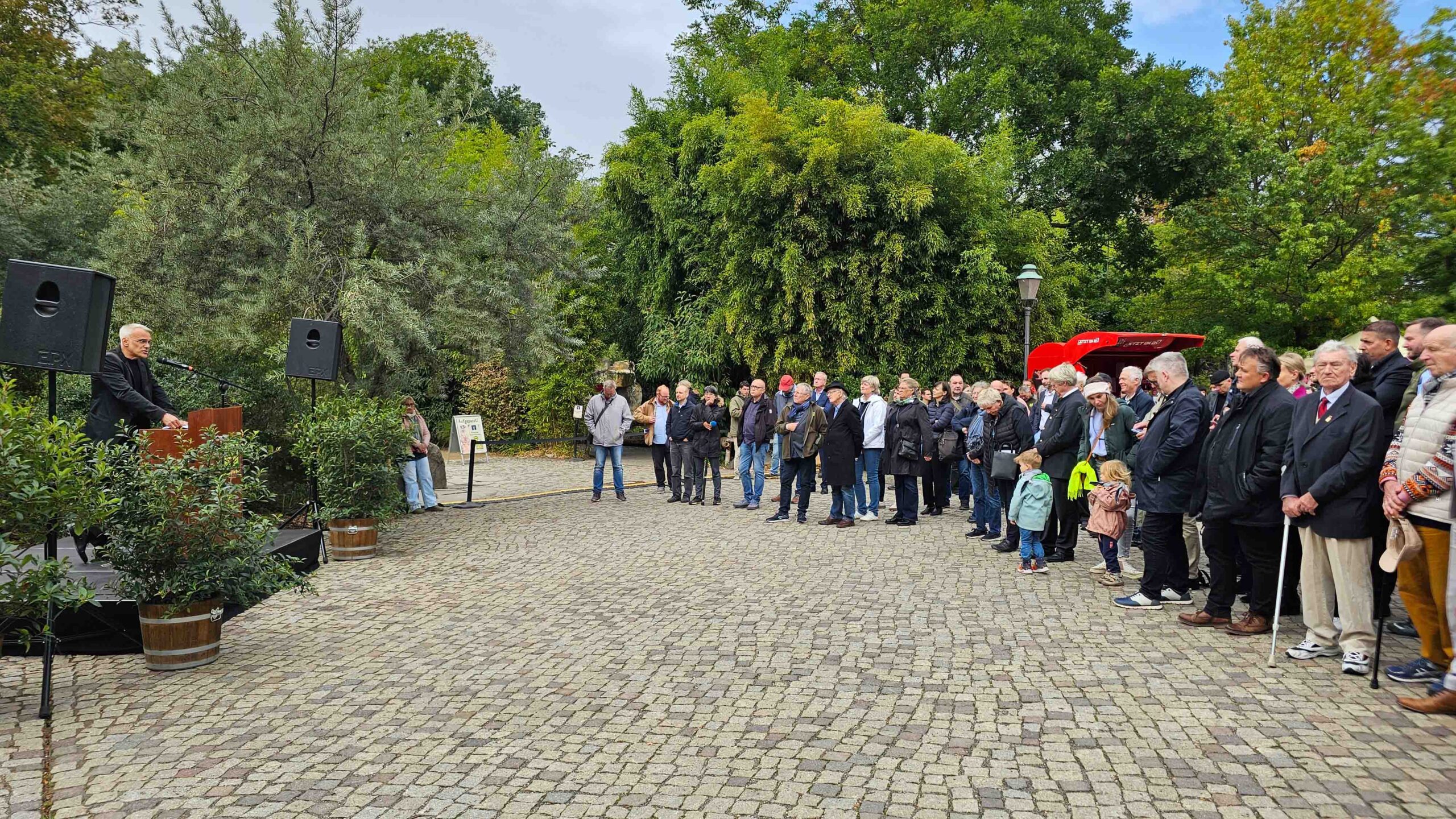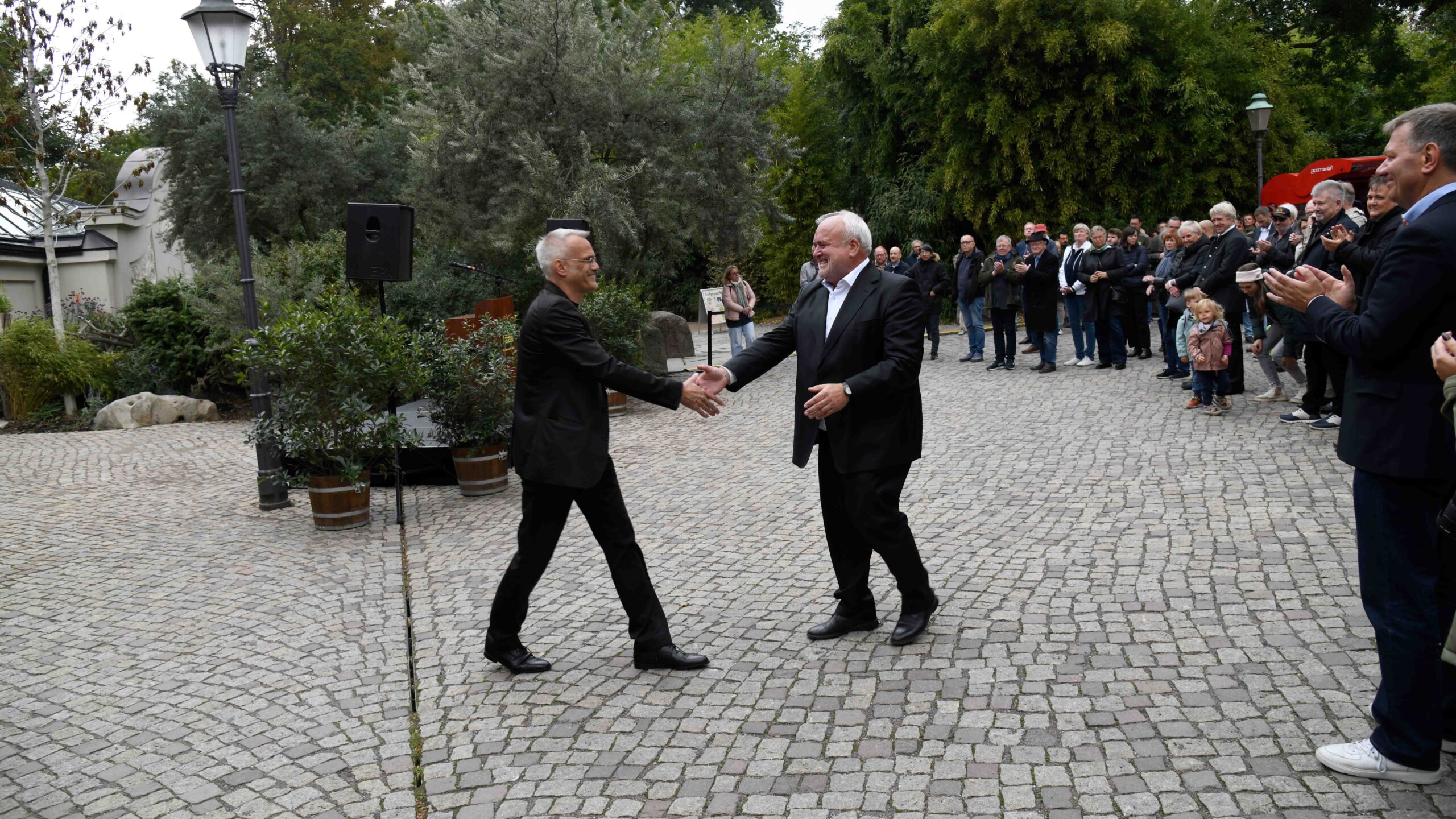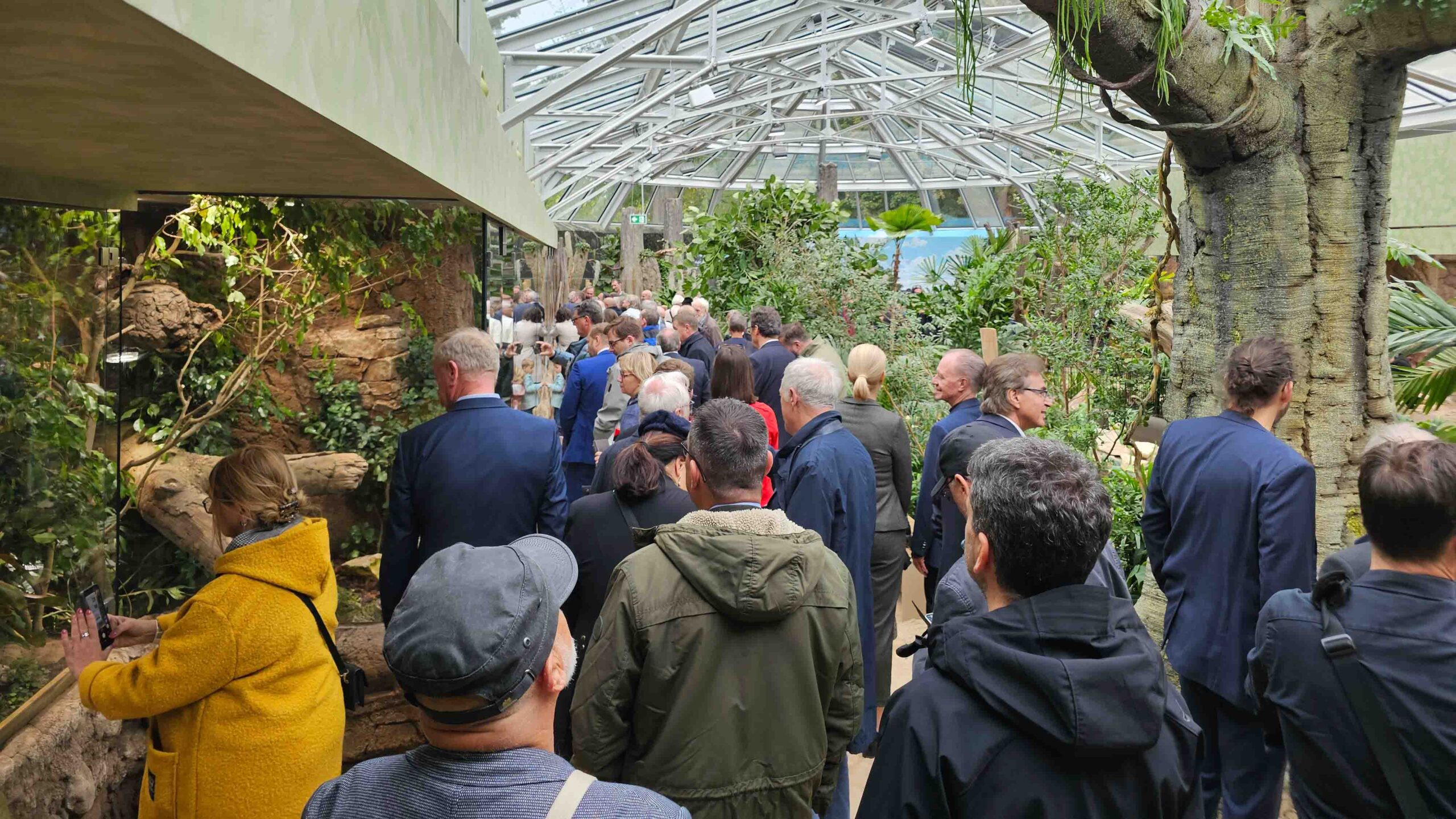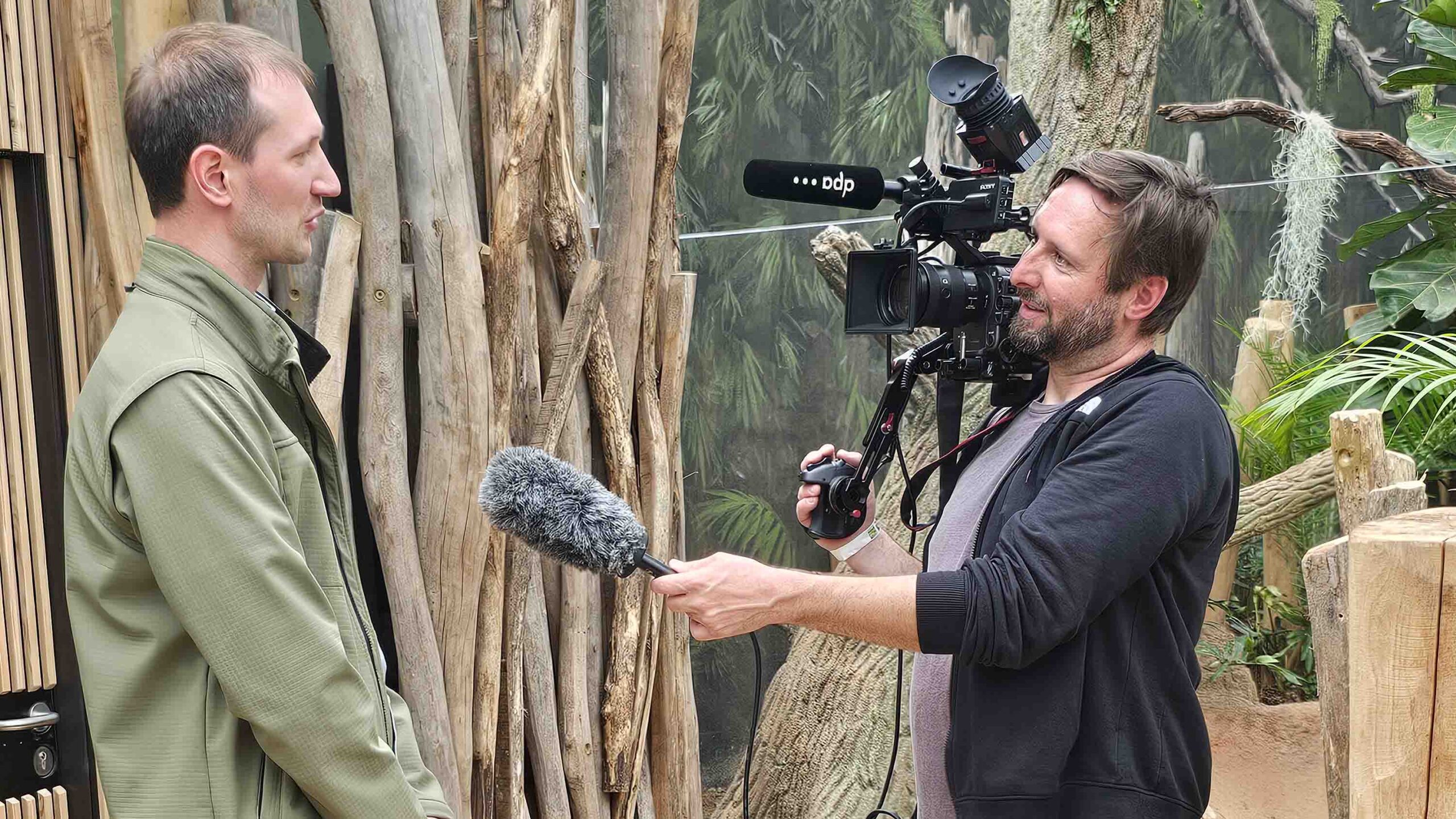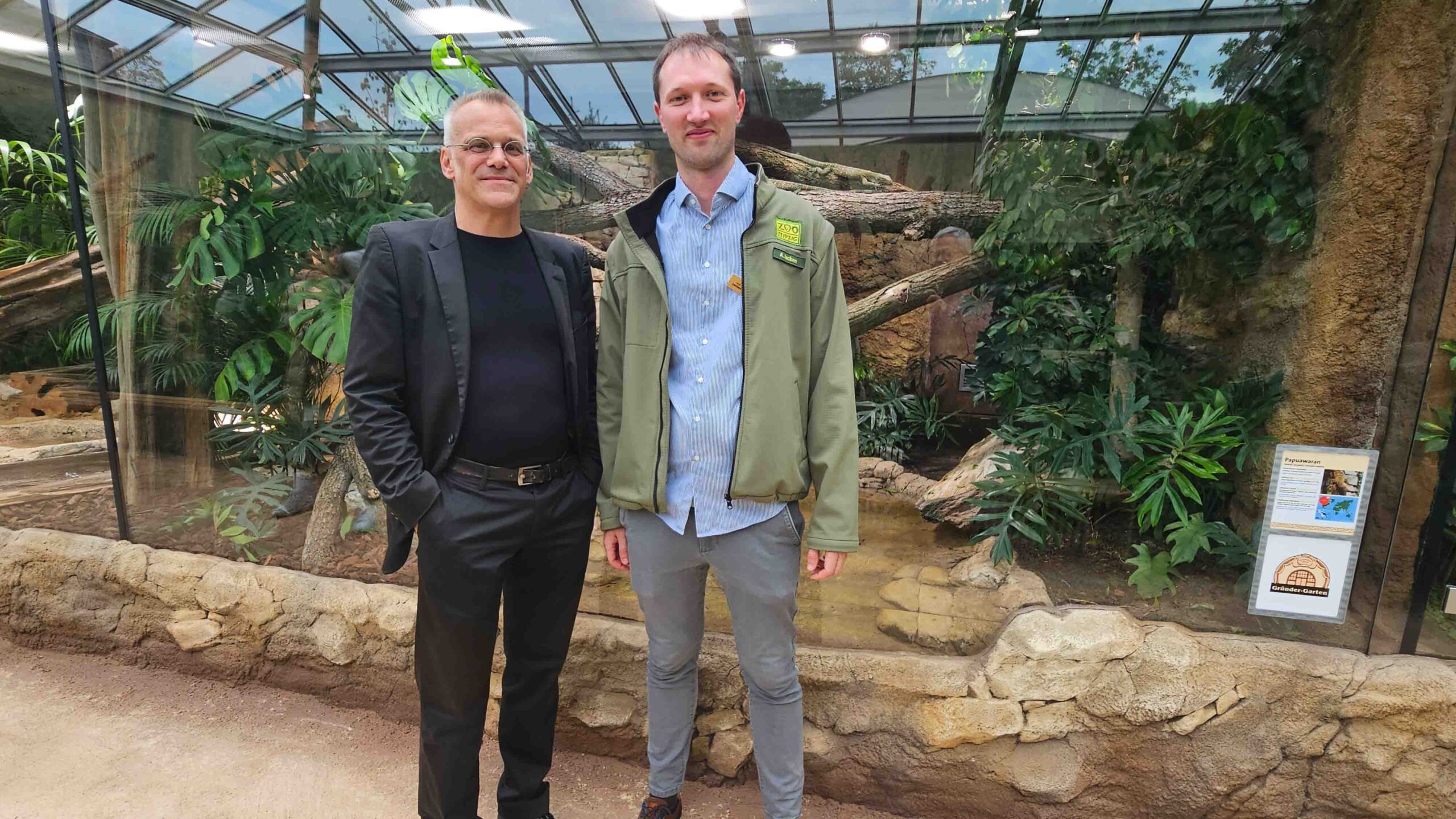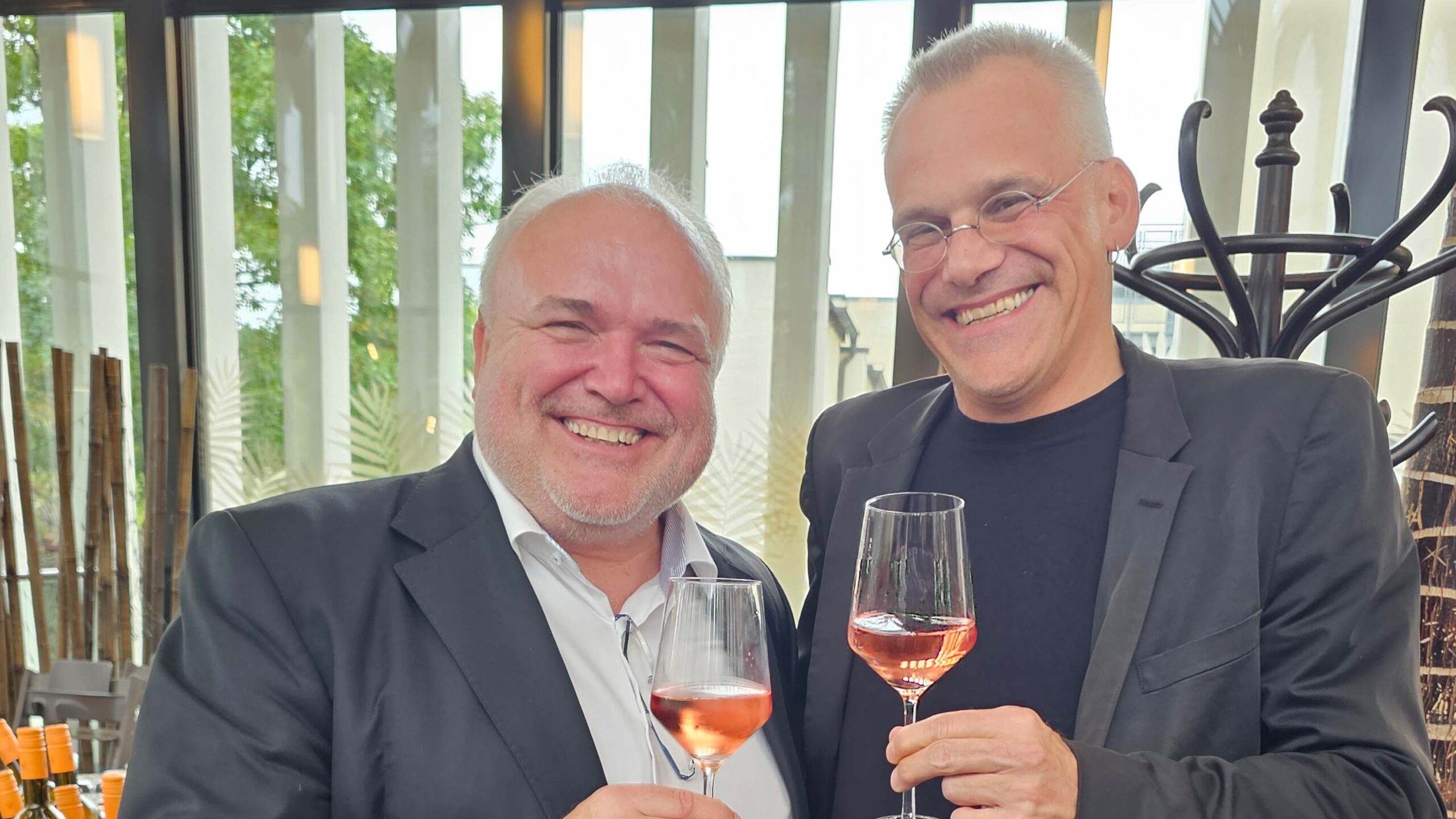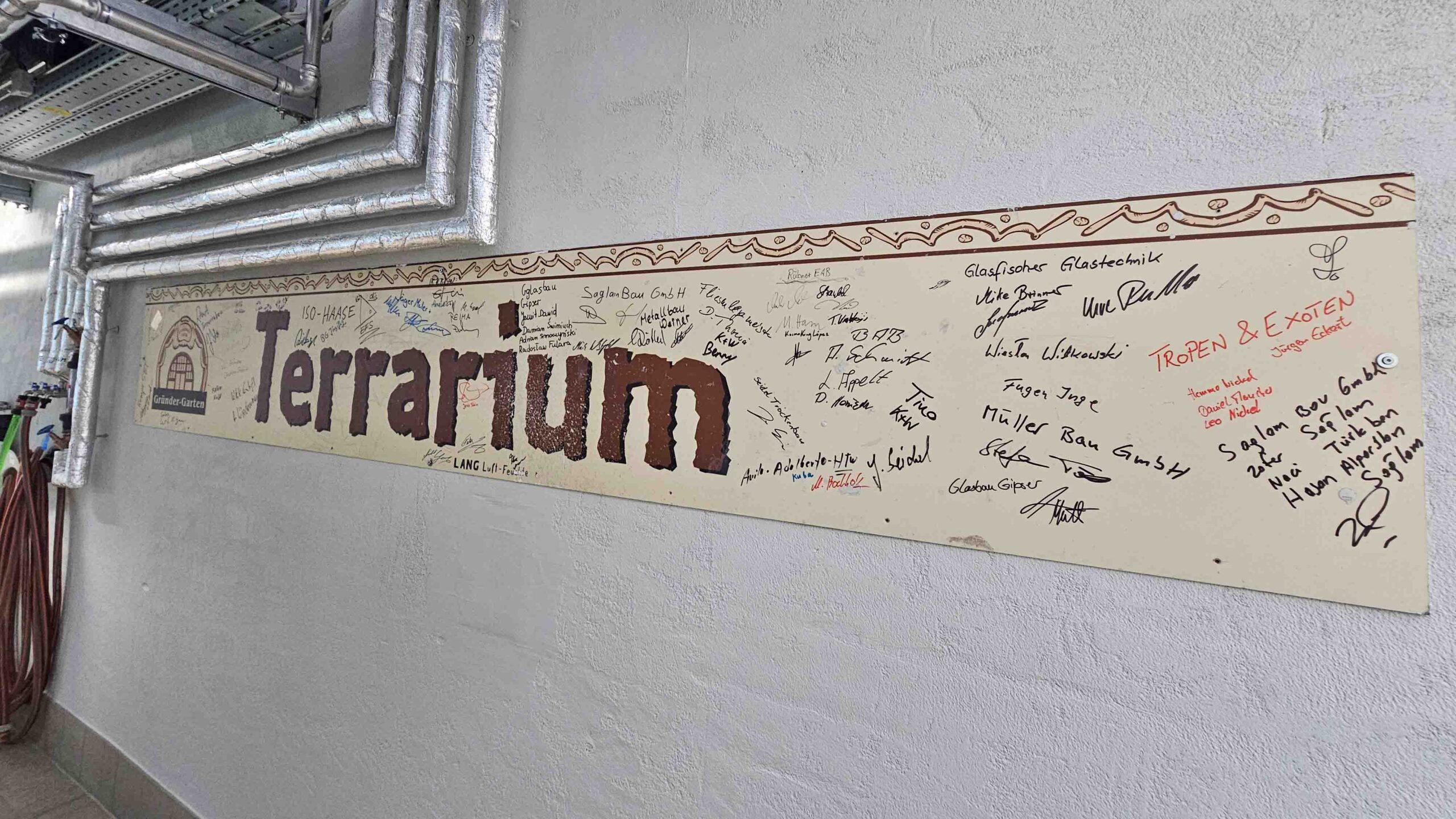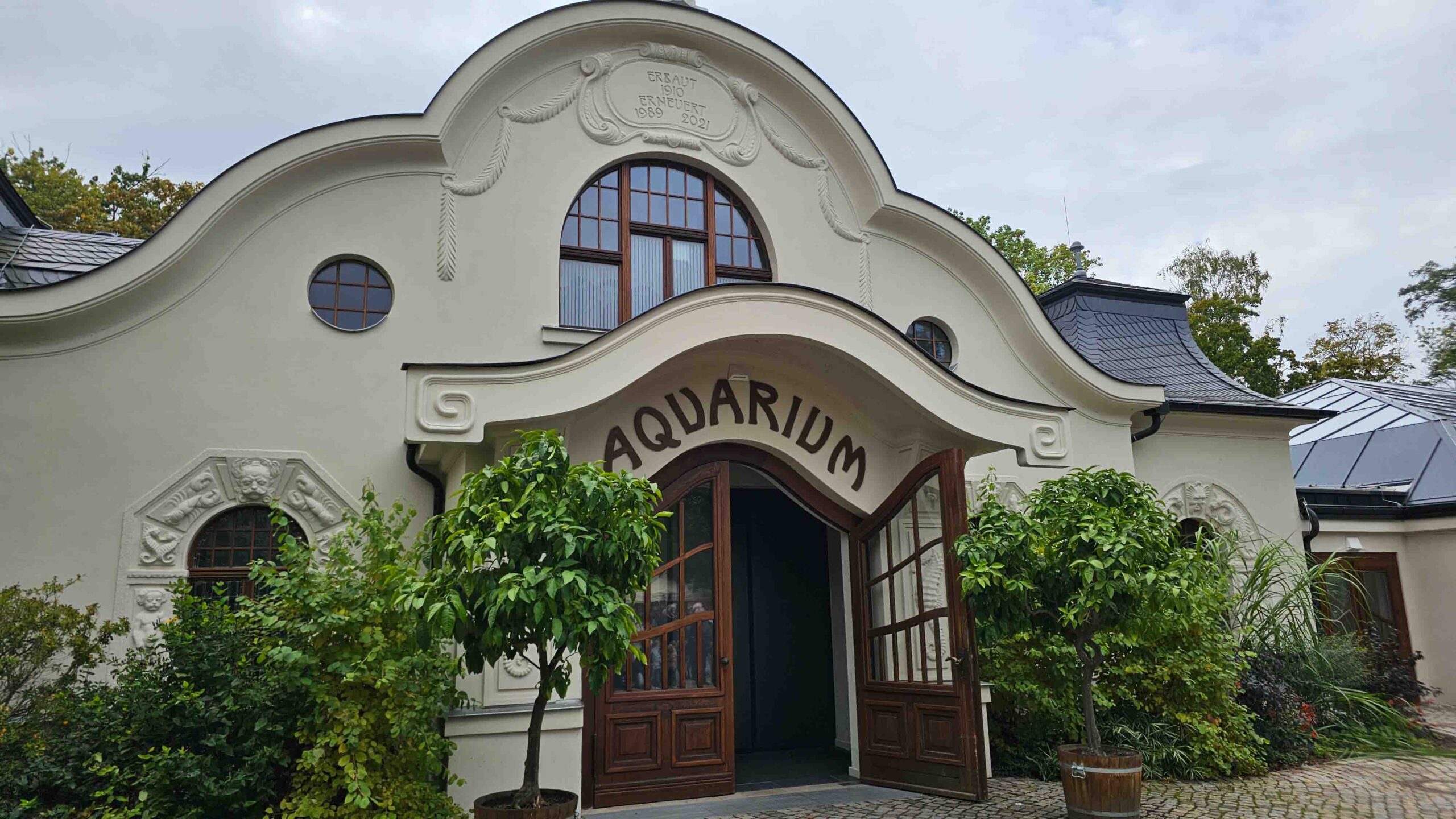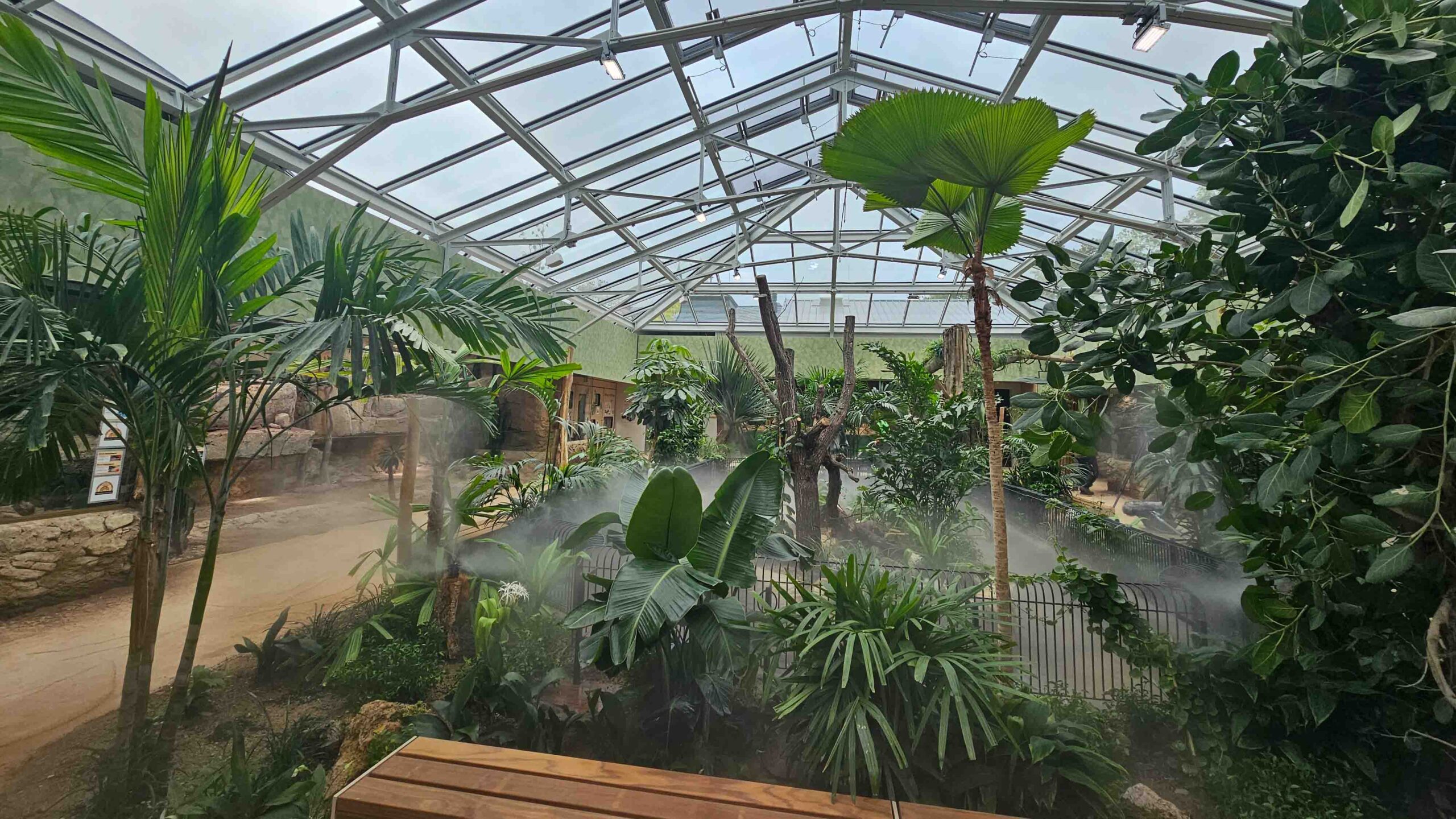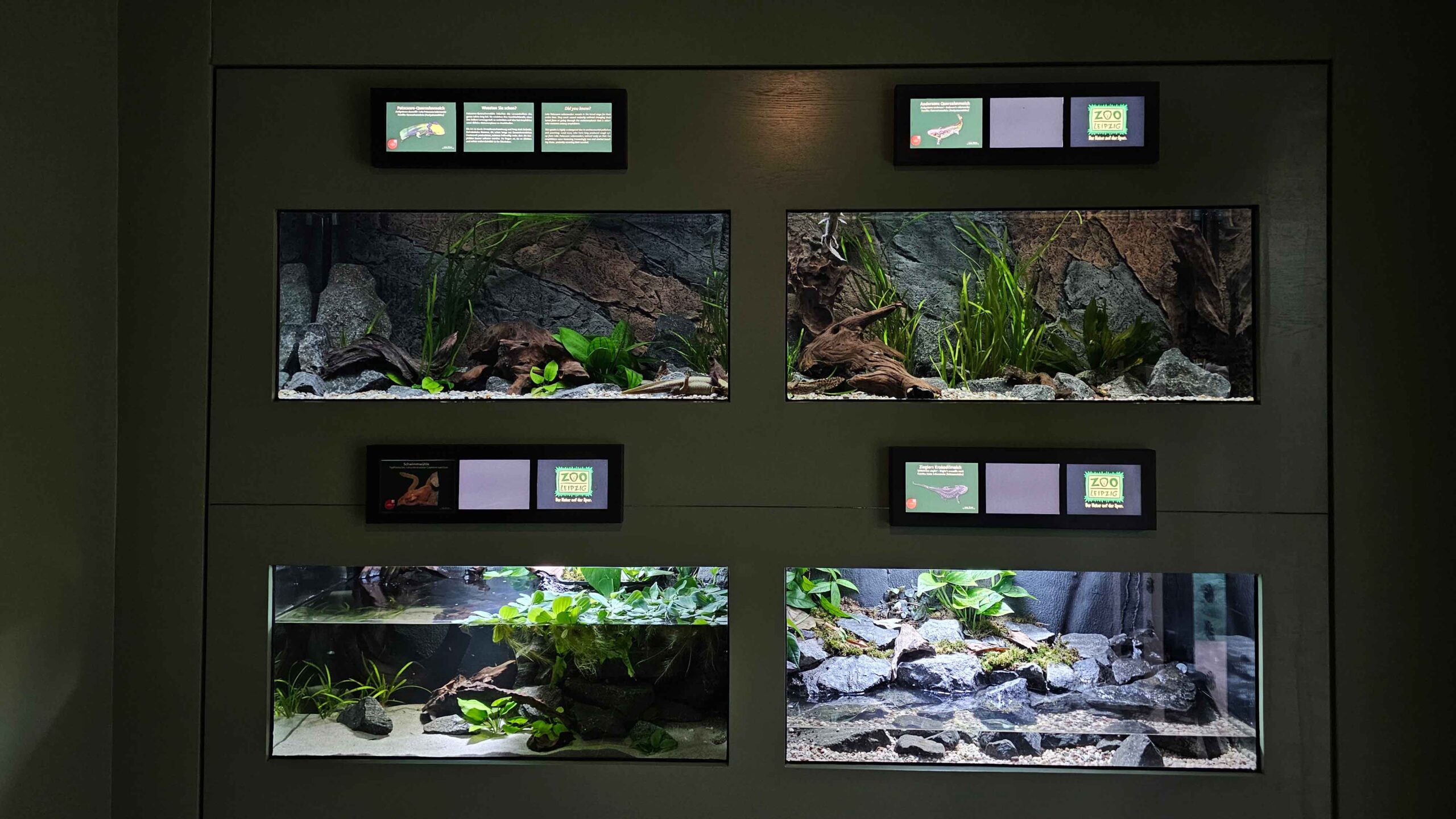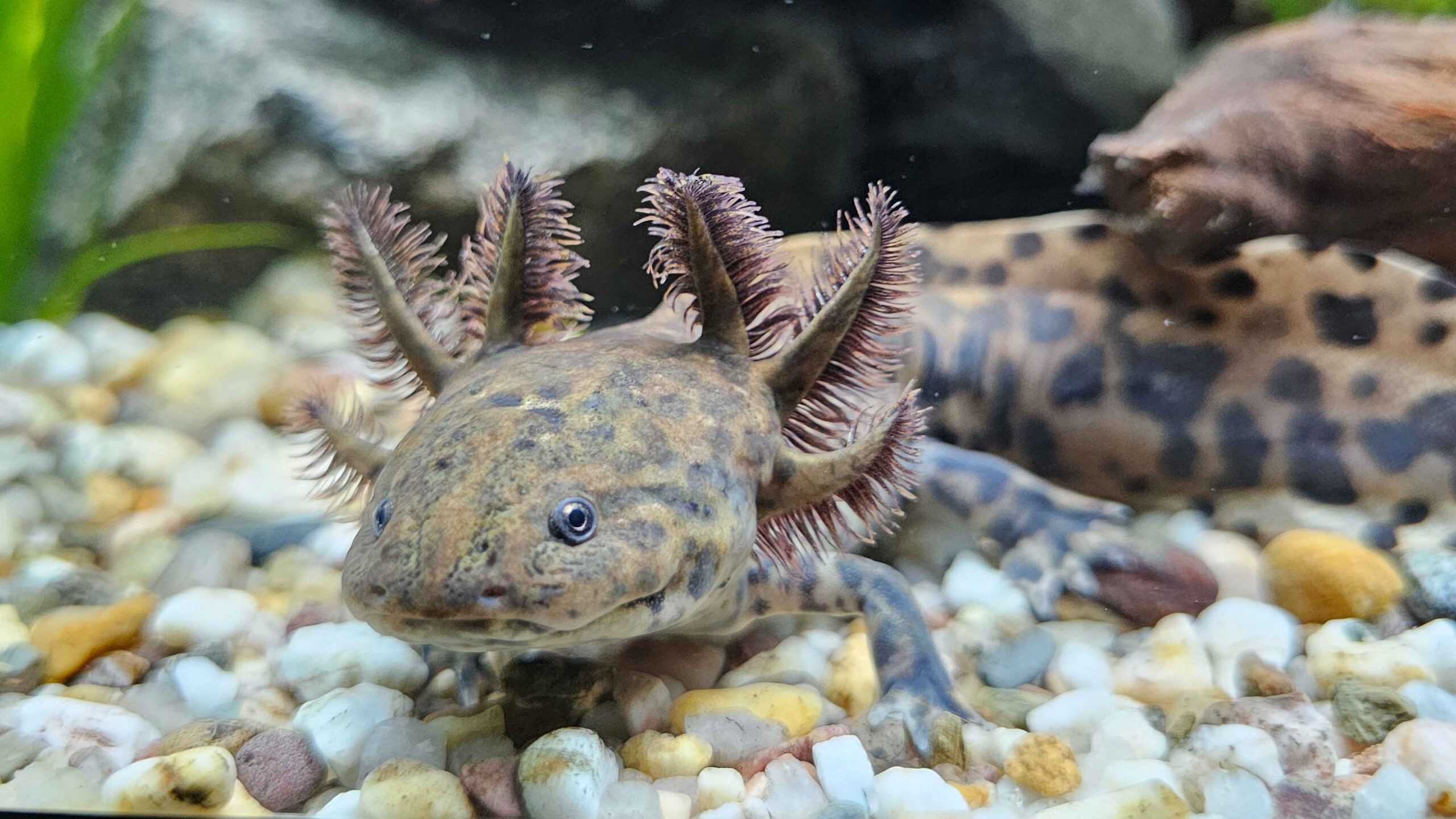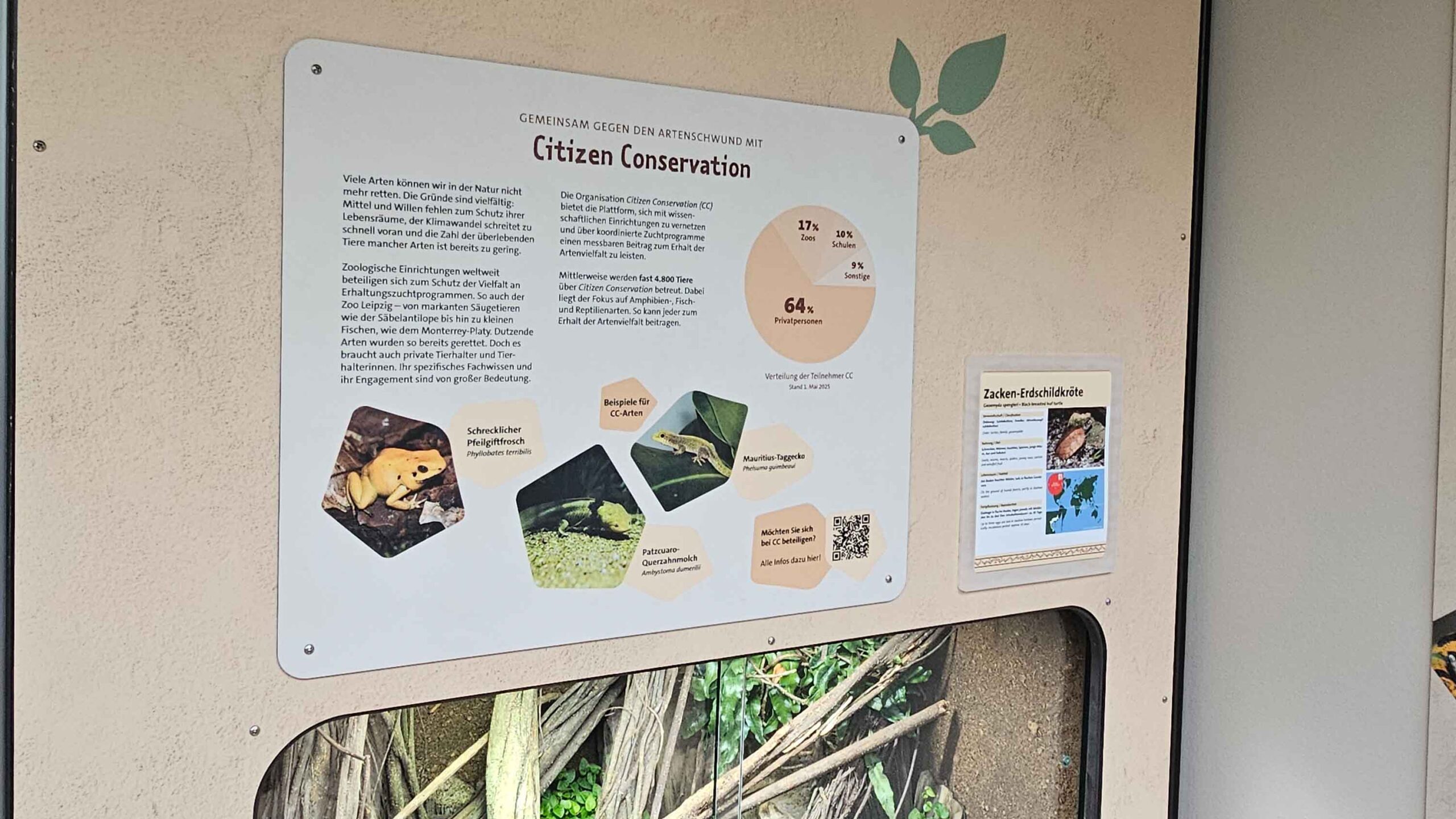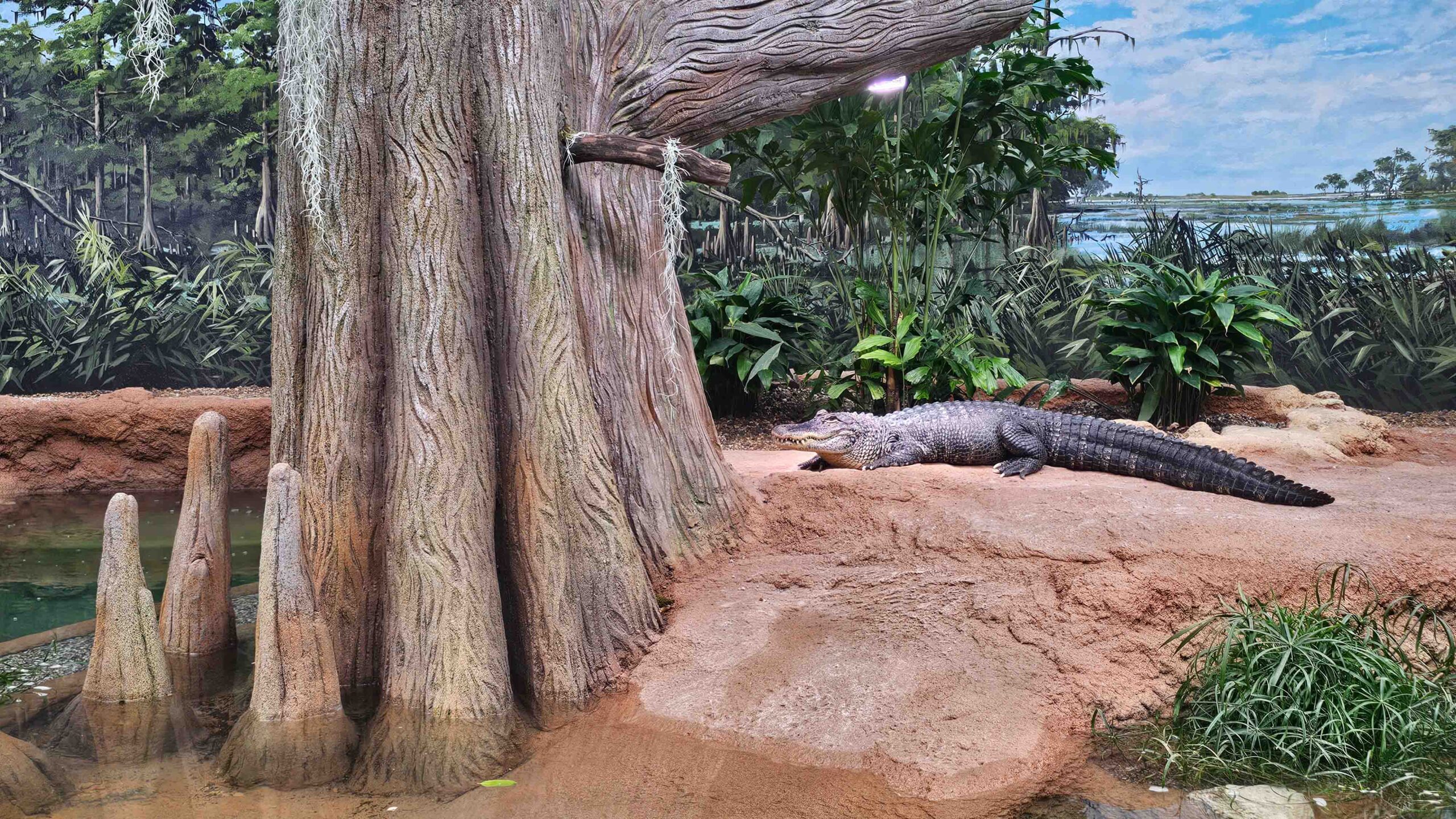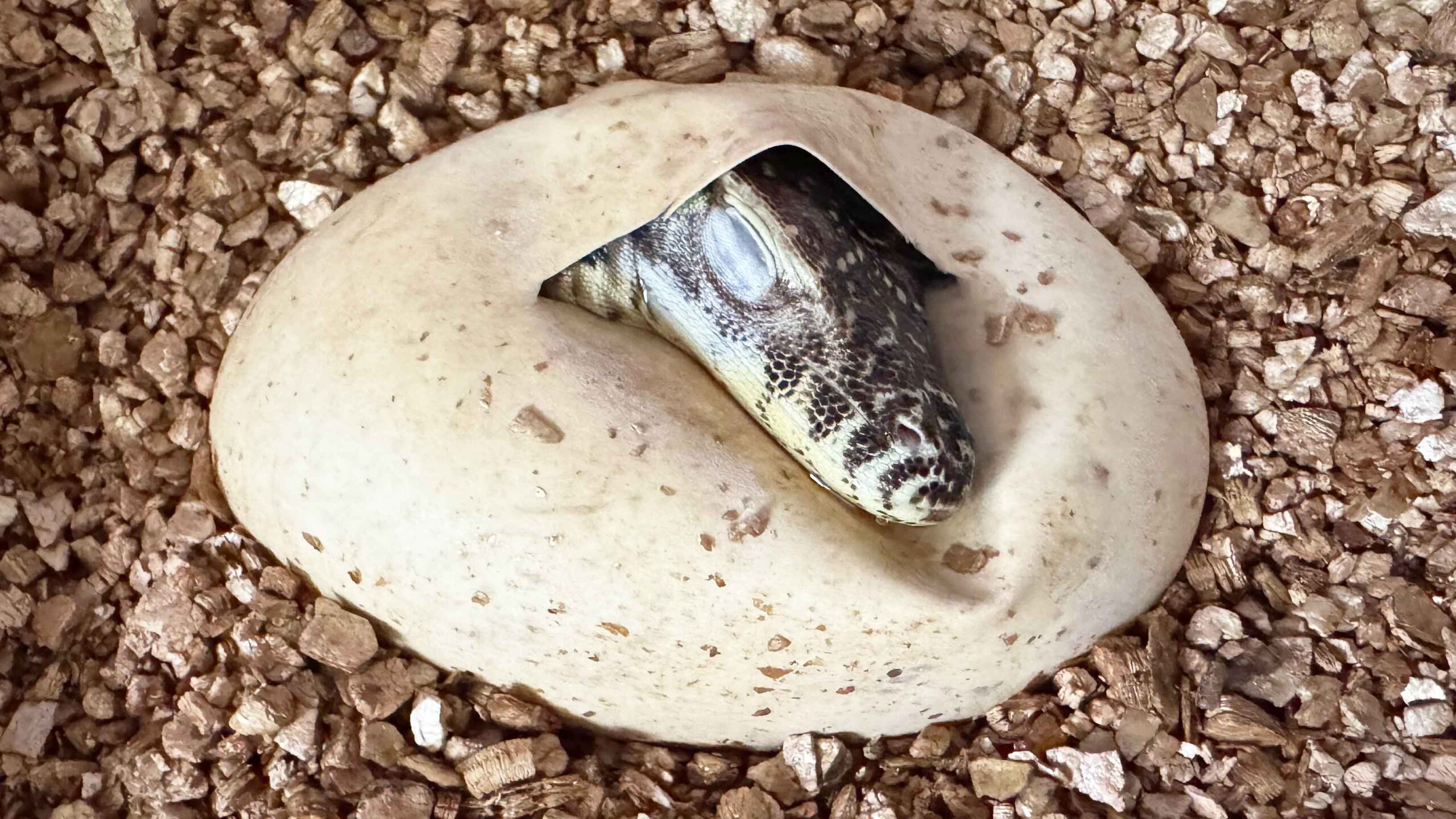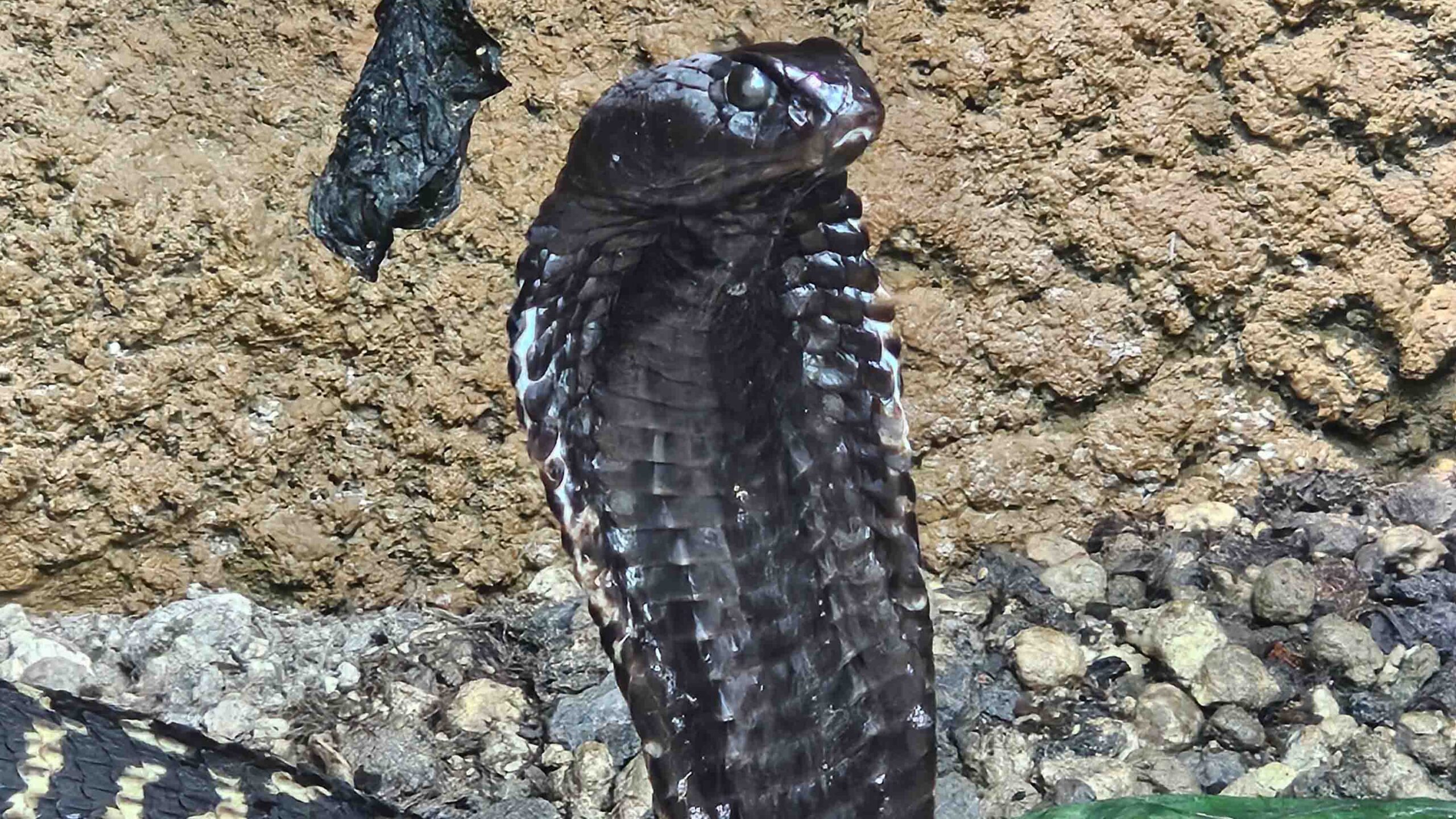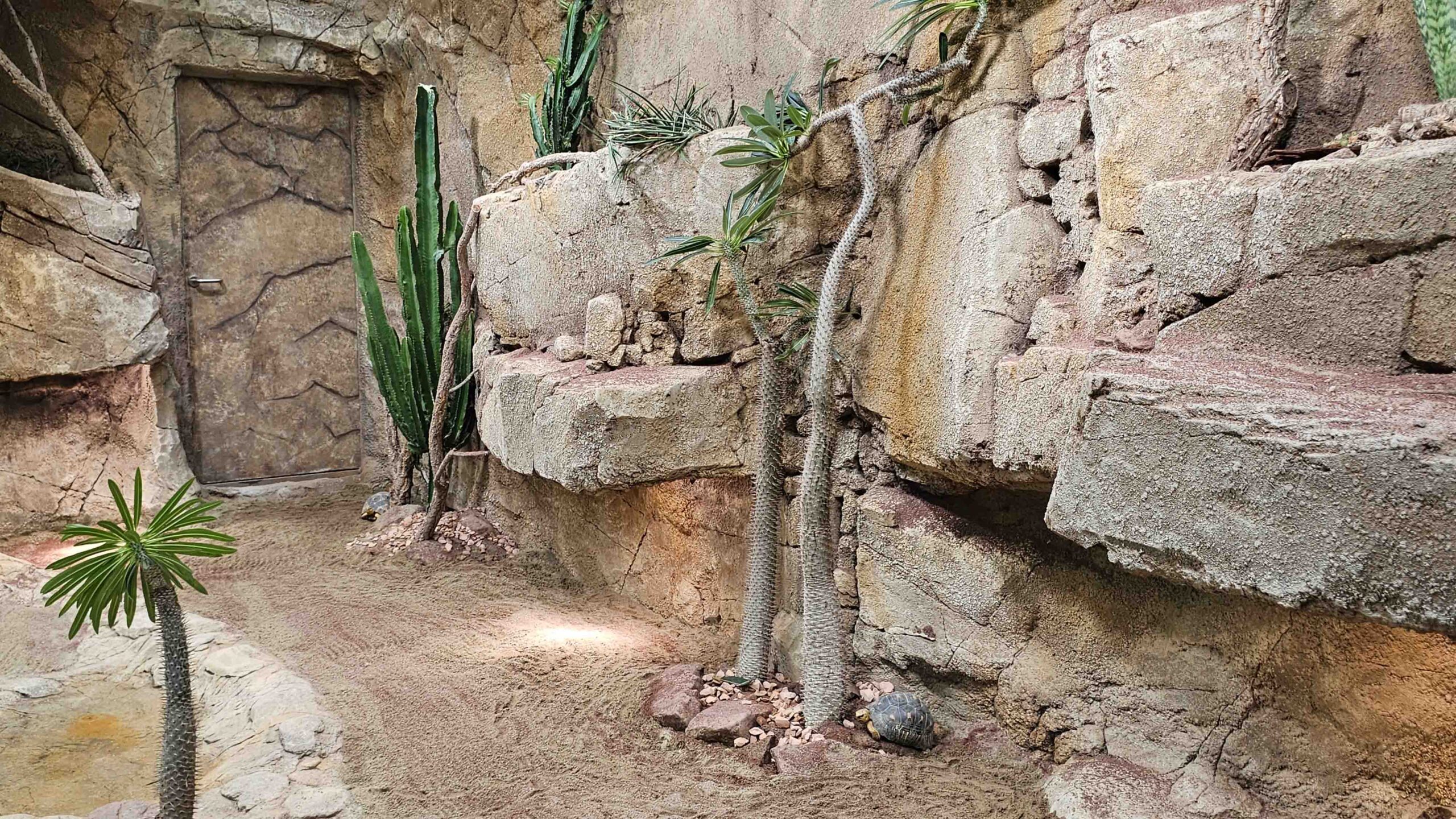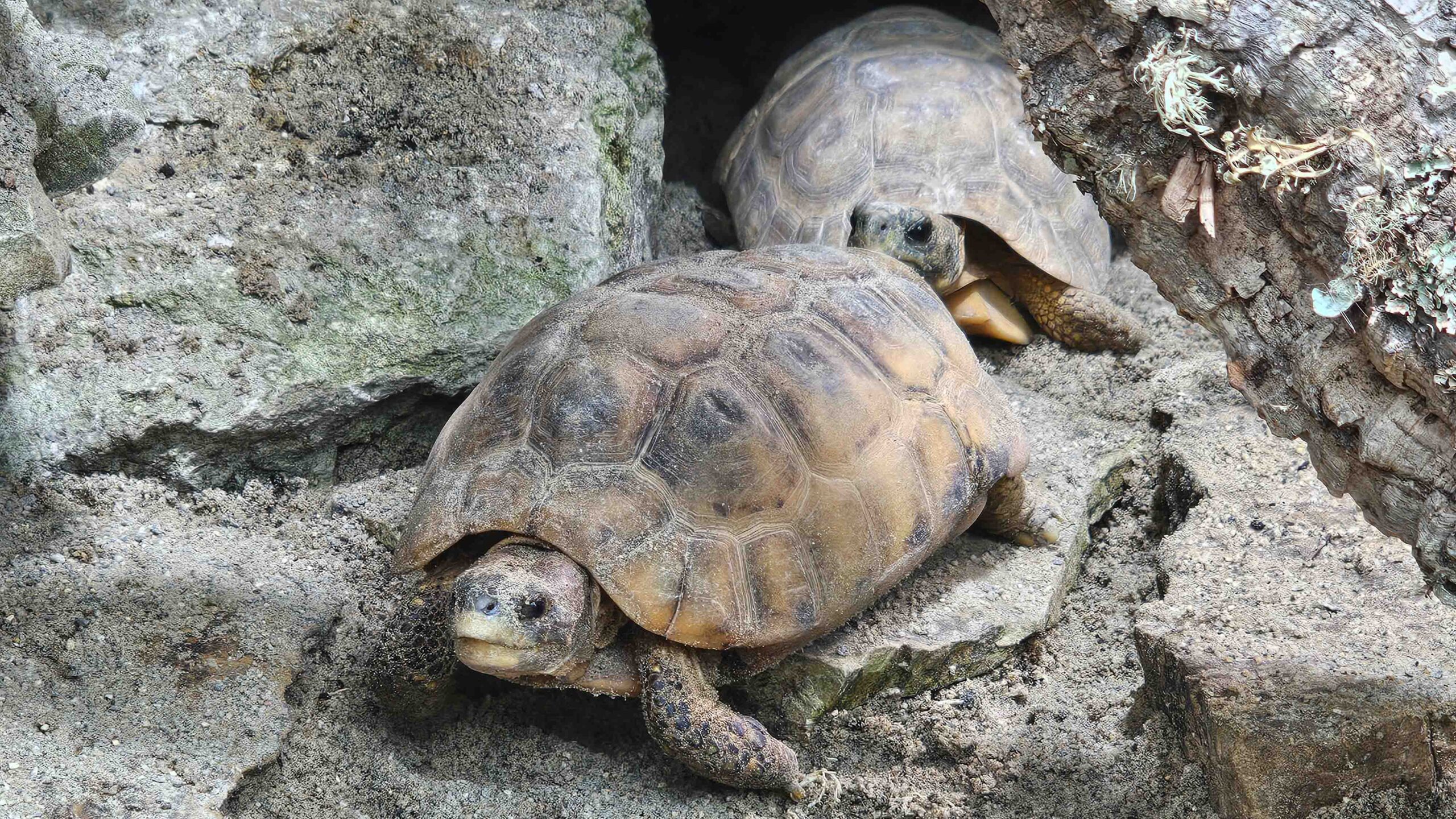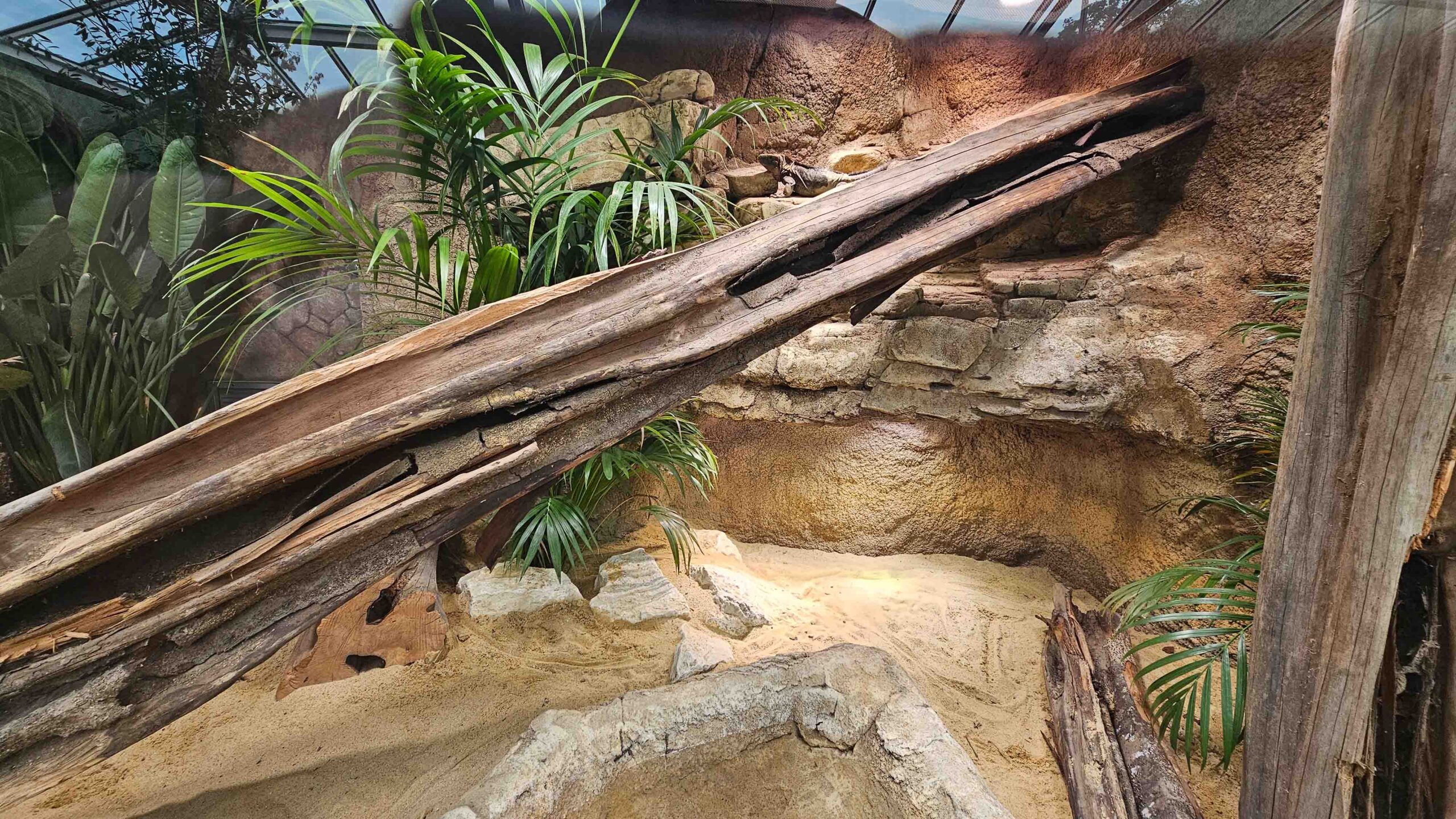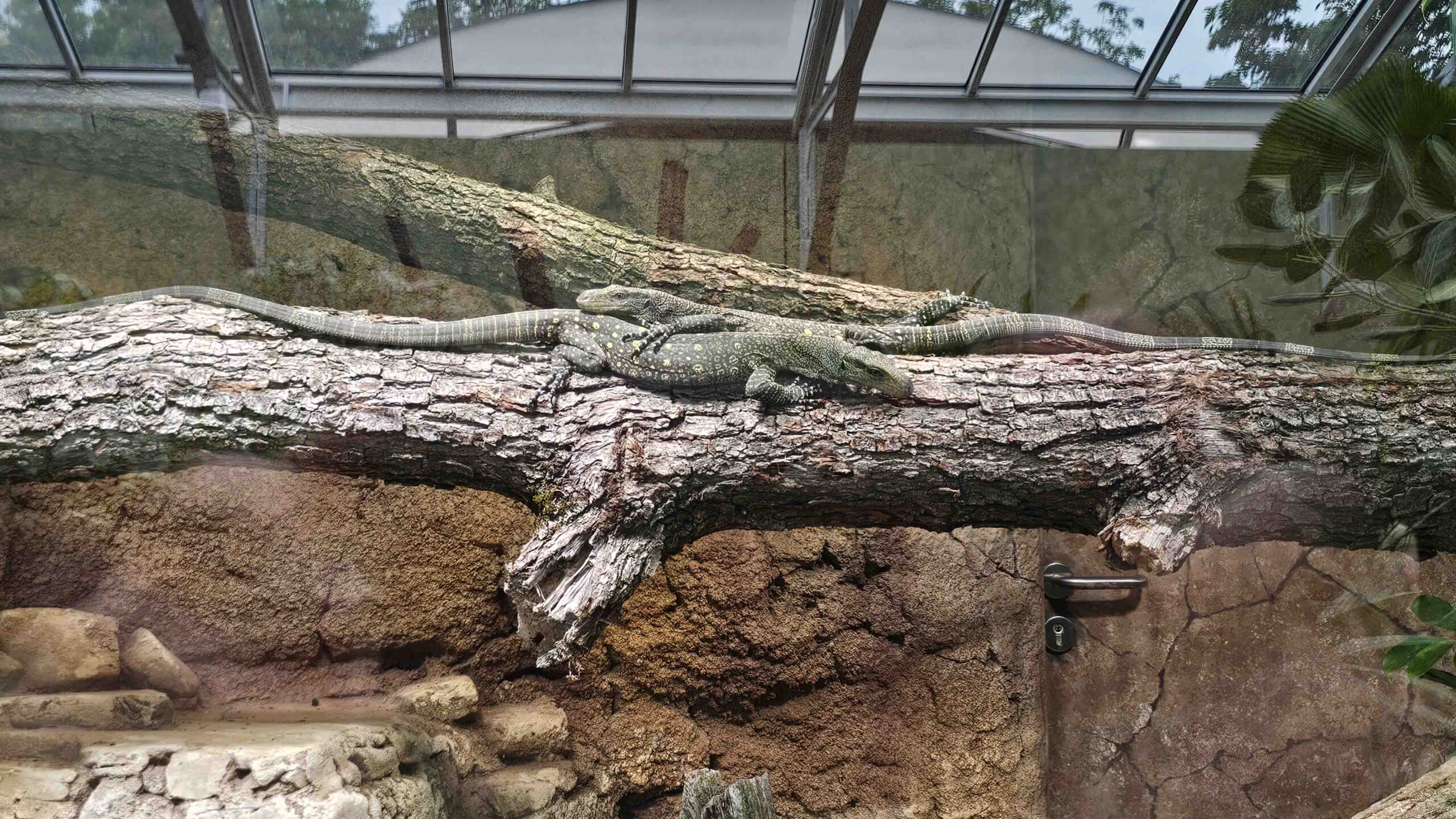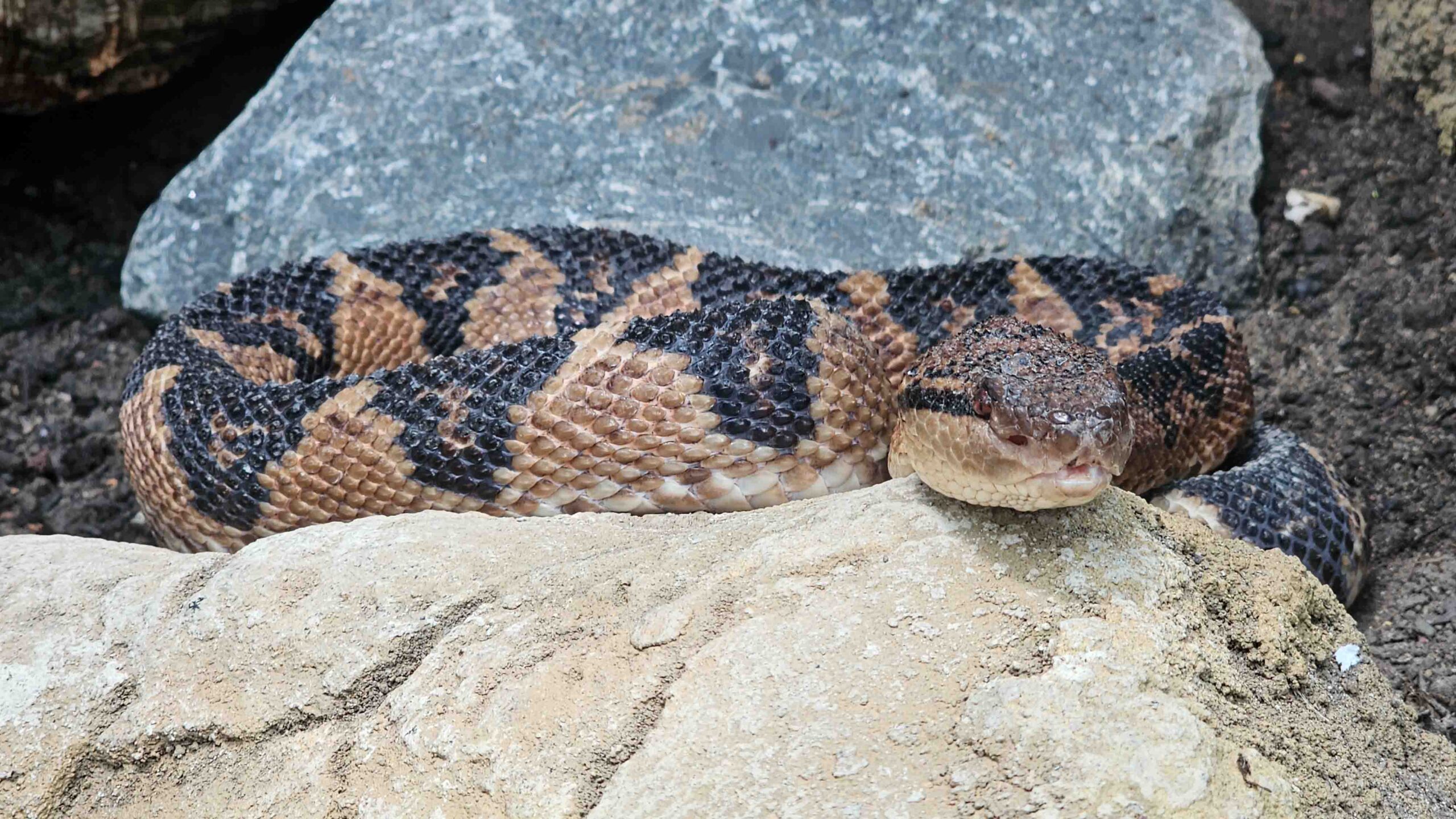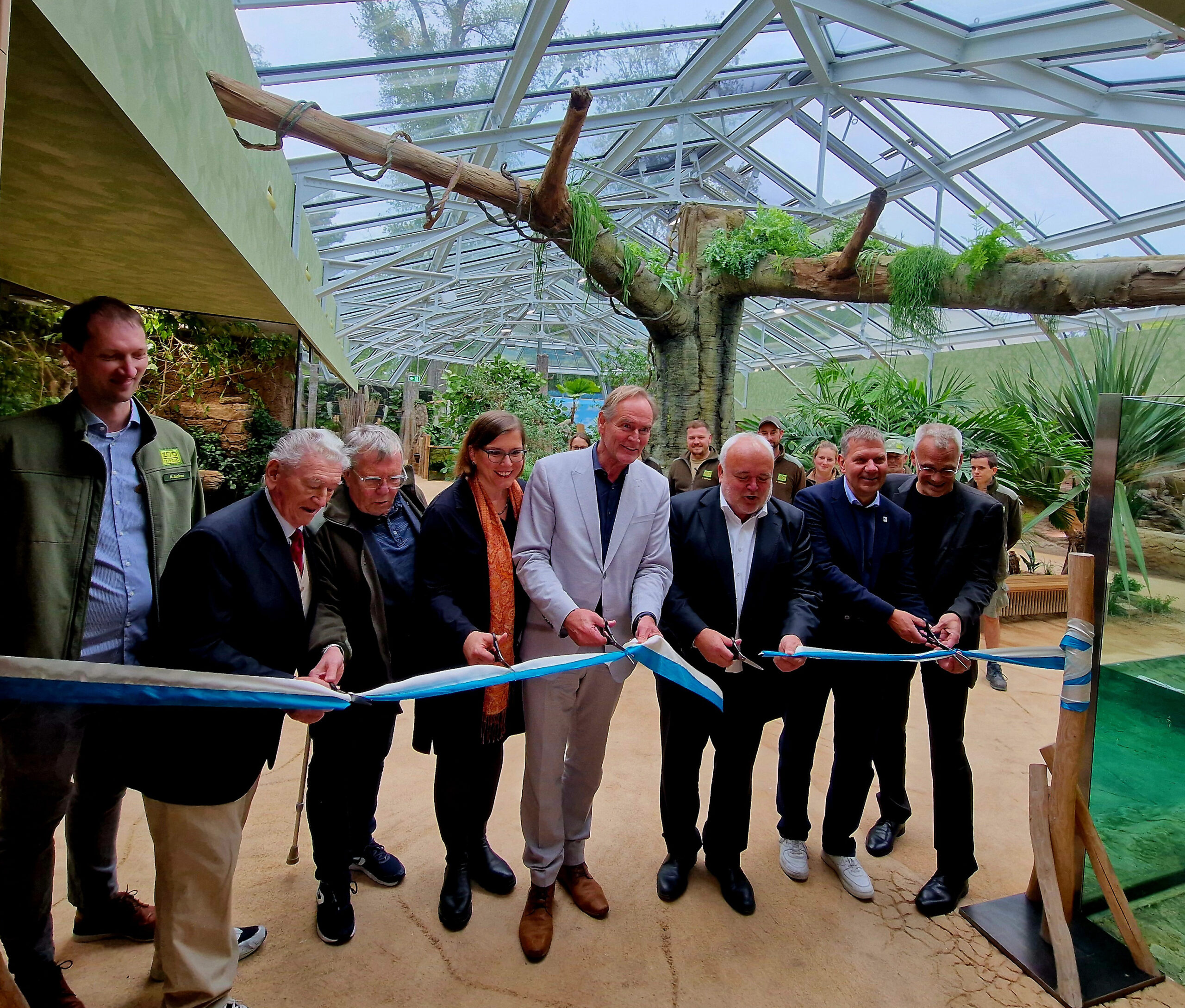
In 1913, a building was built at Leipzig Zoo to house numerous amphibians, reptiles and fish, providing an insight into the biodiversity of these animal groups – a modern facility that was unrivalled at the time. But more than 100 years have naturally left their mark on the building. After the aquarium section was completely renovated a few years ago, it was now the turn of the terrarium. Four years and seven million euros in construction costs later, the time had come on 26 September 2025: the grand reopening of the completely renovated terrarium hall behind the carefully restored historic front.
Overview of the amphibian and reptile world
The tour of the building takes visitors from the origin of life, the sea, via freshwater to the first vertebrates that left the land: amphibians. Four aquariums and aquaterrariums with amphibians form the transition to the newly designed and renovated terrarium hall. This follows its historical predecessor in its interior as well: the corridor circles a large ornamental pond for highly endangered turtles. The terrariums on the outside display a selection of amphibians and, above all, reptiles: from burrowing crocodiles and Mississippi Alligators to Golden Poison Frogs, venomous snakes, adders, monitor lizards and tortoises. These include a number of highly endangered species, such as the extremely rare Jamaican Iguanas and Blue-spotted Tree Monitor. And, of course, the first German zoo offspring of the Komodo Dragon, the largest lizard in the world.
CC in and next to the terrariums
At the end of the tour, smaller terrariums display species that are well suited to keeping at home – a large information board about Citizen Conservation points out that this is also possible as part of a large joint species conservation project involving zoos and private keepers. Fittingly, five CC species can be seen in the new terrarium: Anderson’s and Lake Patzcuaro Salamanders, Ziegler’s Crocodile Newt, the Golden Poison Frog and the Guimbeau’s Day Gecko. The zoo’s stated goal is ‘to inform zoo visitors about the possibilities and efforts of CC in its CC area, both in the terrarium and aquarium sections of the building,’ as director Jörg Junhold emphasises.
Utilising potential
At the opening ceremony, CC Managing Director Björn Encke was invited to say a few words about the importance of conservation breeding in the fight against species extinction, alongside Zoo Director Jörg Junhold, Mayor Burkhard Jung and Zoo Association Managing Director Volker Homes – and, of course, to explain the CC concept: “In Germany, more than three million aquariums and terrariums are maintained in private households. If we manage to win over just one per cent of these for coordinated species conservation, we can save hundreds more species from extinction. It is our responsibility as species conservationists to harness this potential.”
Citizen Conservation is delighted to have found a strong partner and multiplier for this mission in Leipzig Zoo.
